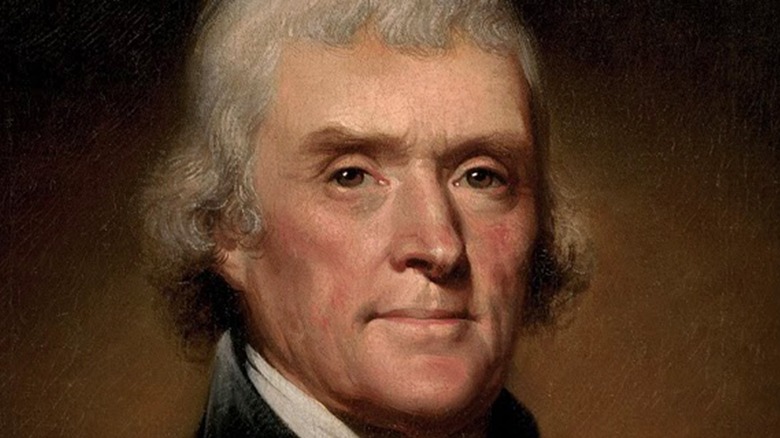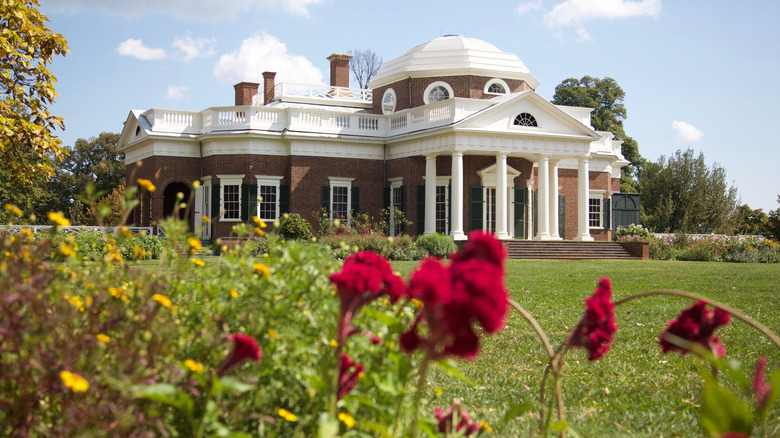The Surprising Connection Between Thomas Jefferson's Wife And Sally Hemings
Born in 1743, Thomas Jefferson was the third president of the United States, a founding father, and a slave owner (via Biography). In 1770, Jefferson began construction on his famed neoclassical estate in Virginia. Monticello, however, was not just a place of residence for Jefferson and his wife Martha Wayles Skelton — it was also a 5,000-acre working plantation (per Monticello). Over 400 slaves lived and worked on the property throughout his lifetime, and one of these slaves was Sally Hemings (via History).
Hemings was part of Jefferson's inheritance through his wife, and although no photos of her exist, she was said to be an extraordinary beauty. Details of her childhood are scarce, but it's known is that Hemings was a nurse to Jefferson's daughter, Maria. In 1787, at the age of 14, she accompanied Maria to Paris, where Jefferson was living.
It's here that their sexual relationship allegedly begins (although, as Hemings was Jefferson's slave, the encounters could not be considered consensual). In France, Hemings was a free woman, and she learned French. When it was time for Jefferson to head back to America, Hemings refused to also return until she made a deal. She would return, but only if she was given "extraordinary privileges” for herself and the promise of freedom for her unborn children at the age of 21. When Hemings arrived back in Virginia, she was 16 and said to have been pregnant.
Thomas Jefferson's wife and Hemings were half-siblings
According to Monticello, Sally Hemings' father was John Wayles, the father of Thomas Jefferson's wife, Martha. Thus, they were genetically half-sisters. Hemings' mother was Wayles' slave, echoing the relationship between Hemings and Jefferson. Hemings was said to have had six children by Jefferson, but only four — Beverly, Madison, Harriet, and Eston — survived to adulthood (via History). He kept the promise he made in France, and they were all eventually freed; Jefferson did not free any other slaves but them.
The children were said to strongly resemble Jefferson. Moreover, three of them later lived as white members of society, and their black lineage was never discovered. As for Hemings, per another article from Monticello, she was never freed. It was not until Jefferson's death that she was permitted to leave and moved in with her adult children (who had since long left Monticello).
The relationship between Jefferson and Hemings is complicated. There is no written account from Hemings, and most of the information known comes from her son, Madison. In addition, it's unknown if the relationship was romantic, and because of her young age, it was not consensual. As a slave, she had no rights and would not be able to refuse her master. Nonetheless, it's important to remember Hemings as more than just the other woman. At only 16, she was able to negotiate an agreement with one of the world's most powerful men that would better her and her children's lives.

